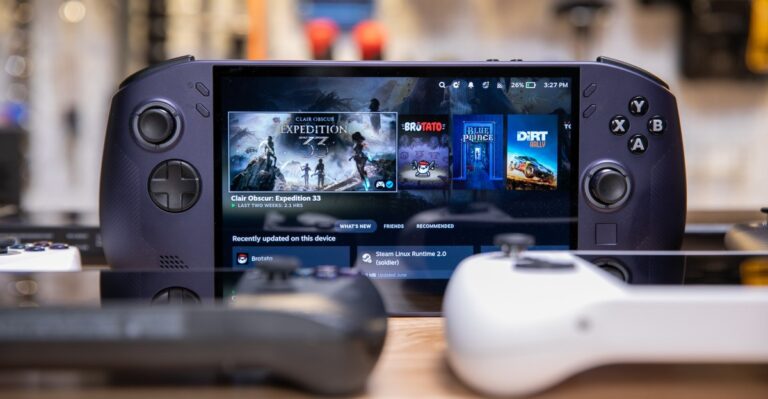Valve’s Steam Deck has dominated the handheld gaming PC space since its 2022 debut. But even as more powerful Windows handhelds arrived to keep up with more demanding games, none have beaten the Steam Deck’s combination of ease-of-use, ergonomics, power, and battery life at an affordable price.
That still hasn’t changed. The Lenovo Legion Go S with SteamOS is not the Steam Deck killer that some headlines would have you believe.
This was supposed to be a moment for handhelds. When the Legion Go S was revealed as the first authorized third-party handheld to run SteamOS, with a $499 starting price, it looked like a true Steam Deck competitor was finally on the way. It even had the blessing and support of the Steam Deck’s creators — something we’d never seen before.
With an actual price of $599 and tradeoffs galore, the base Legion Go S with SteamOS is not a match for the $550 Steam Deck OLED. The more powerful AMD Z1 Extreme model is not half bad, but it’s far more expensive at $829.
But within the disappointment, there is some good news: it’s better than the $730 Windows version with the same hardware that came out last February, and SteamOS is definitely a better experience than Windows.
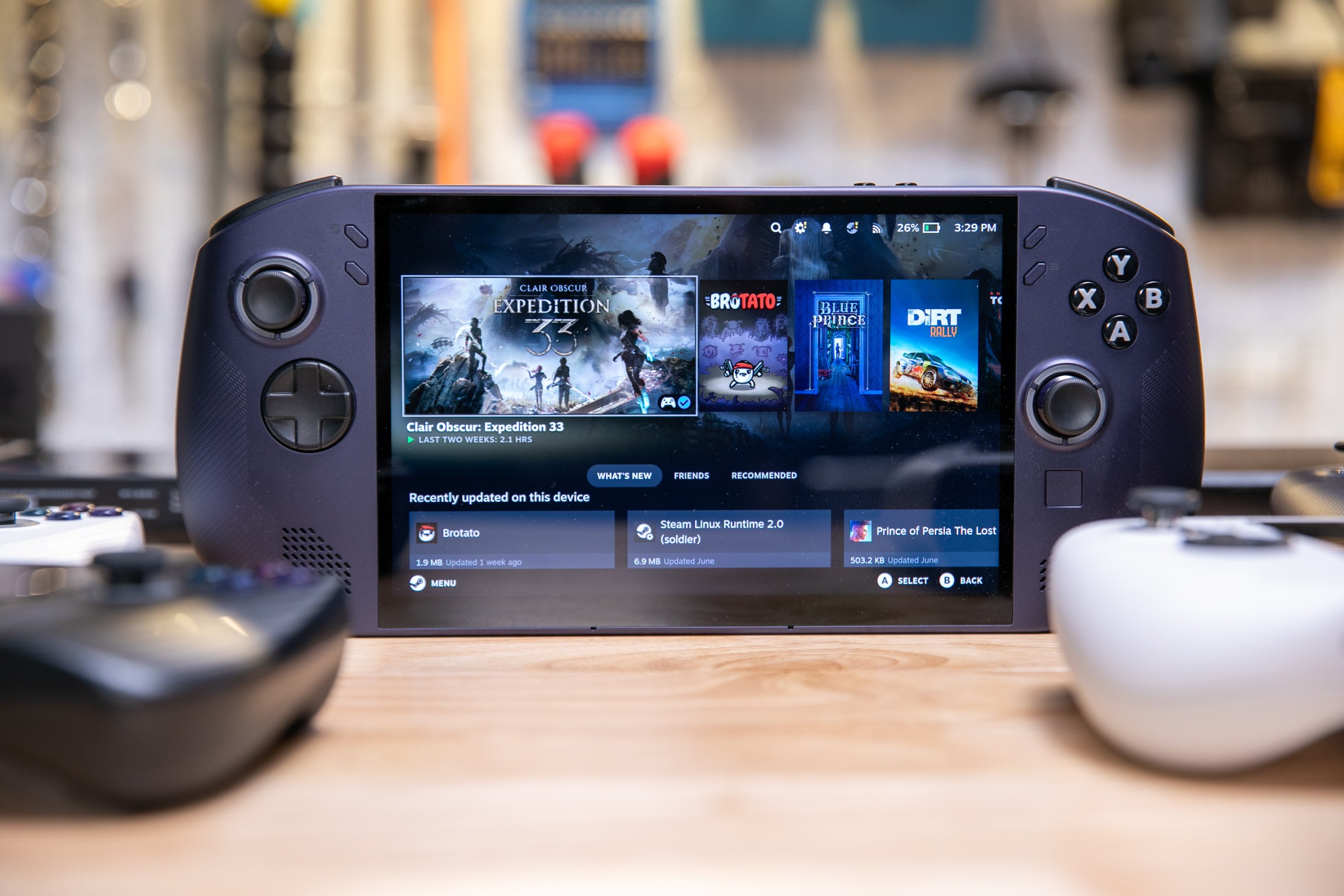
$600
The Good
- SteamOS is a huge improvement over Windows
- Good ergonomics
- Great, variable refresh rate screen
- Powerful cooling
The Bad
- Z2 Go performance only on par with Steam Deck
- Battery life falls behind Steam Deck
- Somewhat slippery texture
- Nearly useless touchpad
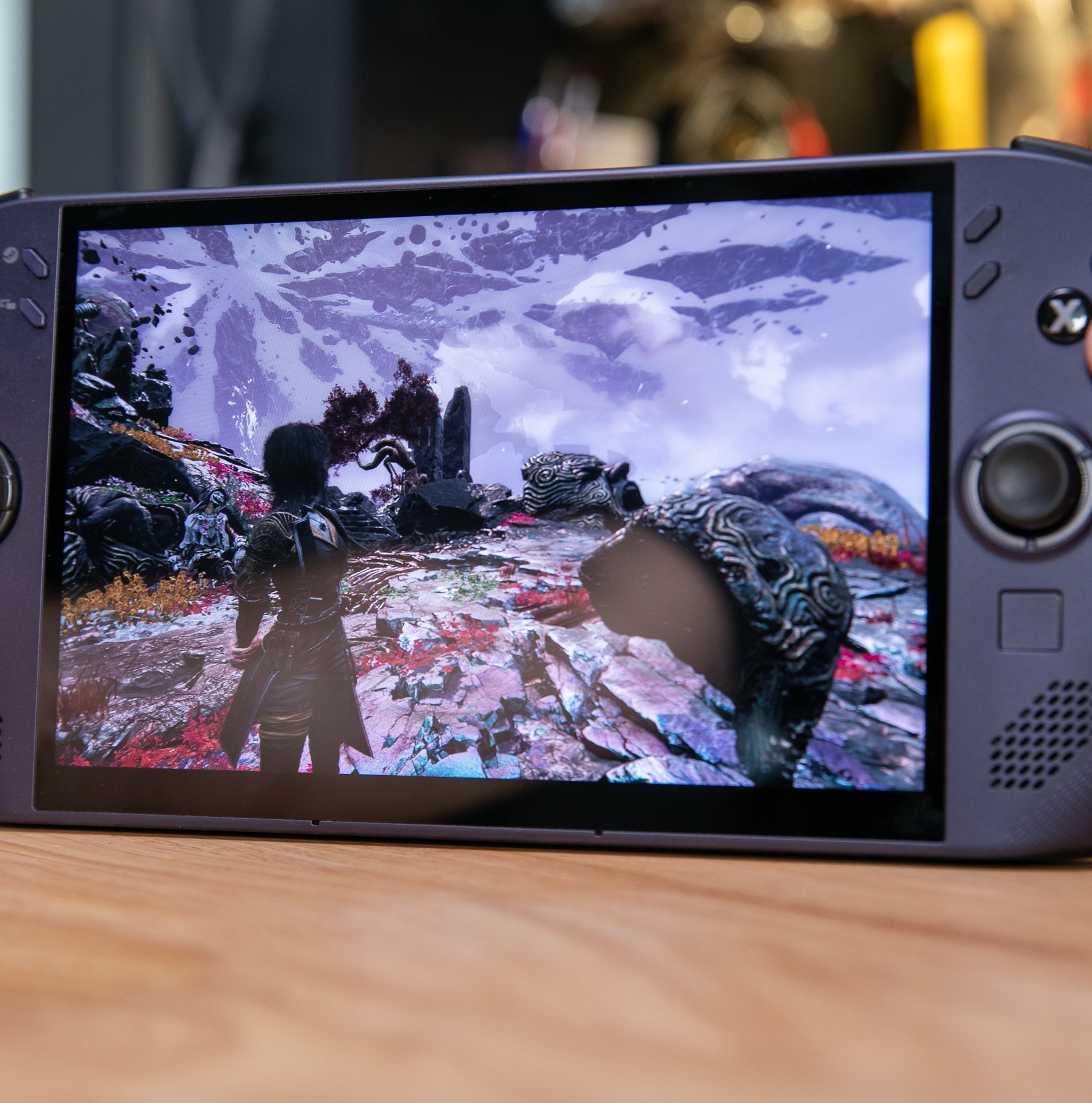
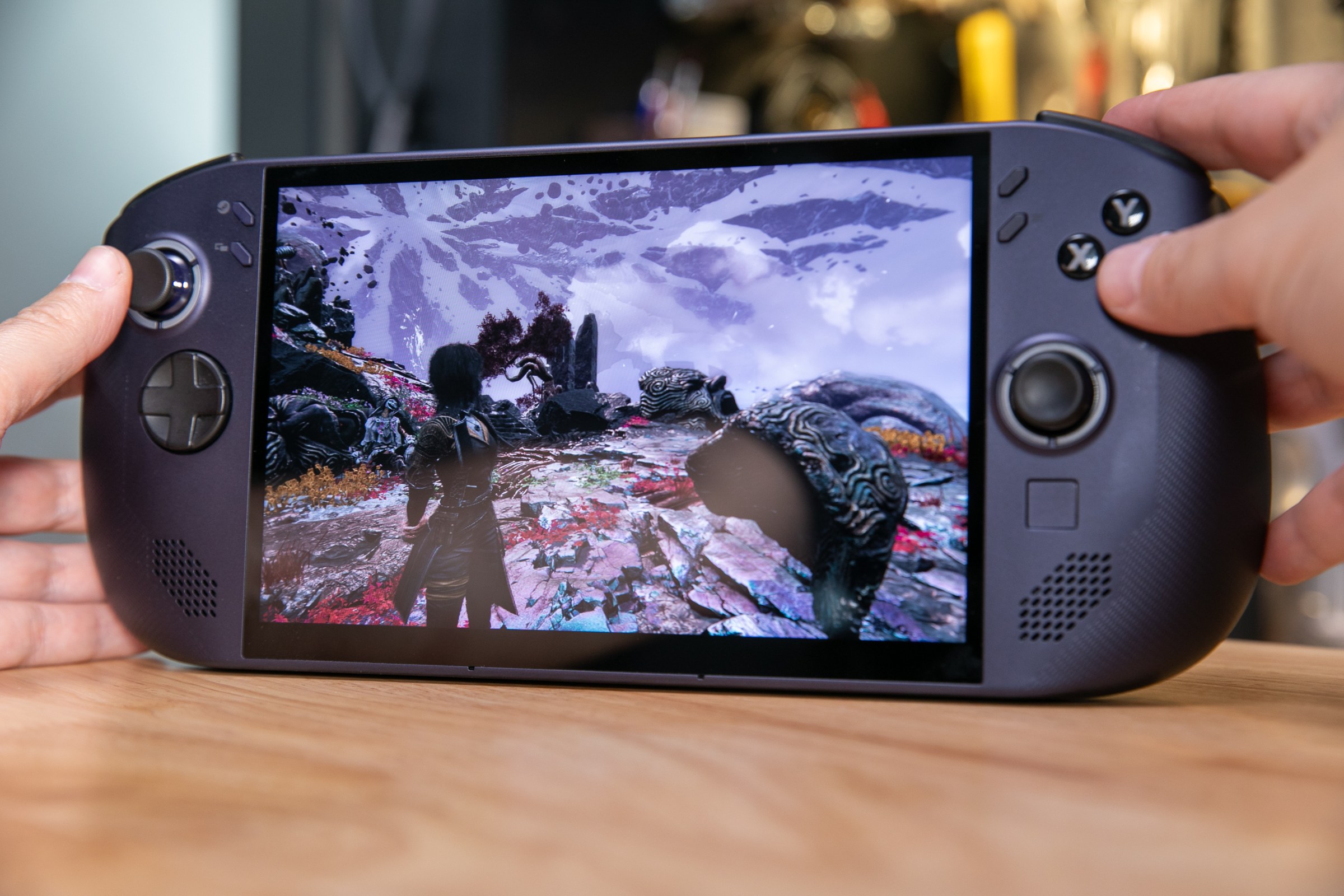
$830
The Good
- SteamOS is a huge improvement over Windows
- Good ergonomics
- Good performance
- Great, variable refresh rate screen
- Powerful cooling
The Bad
- Battery falls behind top Windows handhelds
- Somewhat slippery texture
- Nearly useless touchpad
Back in February, I couldn’t believe just how poor the Windows gaming experience was on this handheld’s AMD Z2 Go chip. A $550 Steam Deck ran Cyberpunk 2077 faster on battery than a $730 Lenovo did while plugged in at maximum boost! And as usual, Windows was a pig: the less you know about the Windows out-of-box experience and wake / sleep issues, the better.
Thankfully, SteamOS washes away the Windows stains. Imagine just pressing a power button to pause a game, then seamlessly resuming the next time you press it! Imagine simply picking a language and scanning a Steam Guard QR code to log into your handheld for the first time, instead of spending 45 minutes batting away upsells for Microsoft 365 Copilot and kin.
And even though the Windows version has also (slightly) improved since I first tested it, the Legion Go S is so much faster with SteamOS: roughly 17 percent faster, in my tests.
Windows vs. SteamOS with the Legion Go S
Game and power mode |
Z2 Go Windows (spring ‘25) |
Z2 Go Windows (summer ‘25) |
Z2 Go SteamOS (summer ‘25) |
Windows improvement since spring |
SteamOS improvement over Windows |
|---|---|---|---|---|---|
| AC Valhalla, 15-watt TDP | 44 | 46 | 60 | 4.55% | 30.43% |
| 20-watt TDP | 55 | 55 | 69 | 0.00% | 25.45% |
| 25-watt TDP | 60 | 60 | 73 | 0.00% | 21.67% |
| 30-watt TDP | 62 | 64 | 76 | 3.23% | 18.75% |
| Plugged in | 65 | 68 | 77 | 4.62% | 13.24% |
| Cyberpunk 2077, 15-watt TDP | 36 | 39 | 50 | 8.33% | 28.21% |
| 20-watt TDP | 41 | 46 | 59 | 12.20% | 28.26% |
| 25-watt TDP | 45 | 50 | 63 | 11.11% | 26.00% |
| 30-watt TDP | 46 | 52 | 66 | 13.04% | 26.92% |
| Plugged in | 49 | 56 | 62 | 14.29% | 10.71% |
| DX: Mankind Divided, 15-watt TDP | 56 | 58 | 67 | 3.57% | 15.52% |
| 20-watt TDP | 63 | 67 | 74 | 6.35% | 10.45% |
| 25-watt TDP | 66 | 71 | 77 | 7.58% | 8.45% |
| 30-watt TDP | 67 | 72 | 78 | 7.46% | 8.33% |
| Plugged in | 70 | 73 | 79 | 4.29% | 8.22% |
| Returnal, 15-watt TDP | 24 | 25 | 21 | 4.17% | -16.00% |
| 20-watt TDP | 26 | 30 | 24 | 15.38% | -20.00% |
| 25-watt TDP | 29 | 31 | 26 | 6.90% | -16.13% |
| 30-watt TDP | 30 | 33 | 27 | 10.00% | -18.18% |
| Plugged in | 32 | 35 | 27 | 9.38% | -22.86% |
| Shadow of the Tomb Raider, 15-watt TDP | 53 | 48 | 54 | -9.43% | 12.50% |
| 20-watt TDP | 53 | 56 | 59 | 5.66% | 5.36% |
| 25-watt TDP | 55 | 60 | 61 | 9.09% | 1.67% |
| 30-watt TDP | 64 | 62 | 62 | -3.13% | 0.00% |
| Plugged in | 65 | 65 | 71 | 0.00% | 9.23% |
| HZD Remastered, 15-watt TDP | 18 | 18 | 30 | 0.00% | 66.67% |
| 20-watt TDP | 21 | 20 | 32 | -4.76% | 60.00% |
| 25-watt TDP | 24 | 21 | 33 | -12.50% | 57.14% |
| 30-watt TDP | 24 | 21 | 34 | -12.50% | 61.90% |
| Plugged in | 24 | 25 | 39 | 4.17% | 56.00% |
SteamOS’s performance increase can translate to better battery life, too. On the Windows model, playing 2020’s Assassin’s Creed Valhalla at 720p resolution and 60fps at low settings required an average of 36 watts — enough to drain the Legion Go S’s 55 watt-hour battery in 1.5 hours. But with SteamOS, the same 60fps gameplay requires just 22 watts, giving you an entire extra hour of gameplay (55 watt-hours divided by 22 watts = 2.5 hours) just by installing a different OS.
Not all games see as dramatic a boost, but the same is true of Cyberpunk 2077: if you play at 50fps, you get up to an extra hour of battery life from SteamOS.
SteamOS also makes it so much easier to change those power modes, map out new control schemes, and monitor your performance and battery life. You can simply hold down a button and flick a joystick to change your screen brightness or summon a virtual mouse, so there’s no need to dive into menus. You can even install Decky, the unofficial SteamOS plugin loader, on a Legion Go S, to flesh out your Steam Library with game art or more easily install Epic Game Store titles.
But all that is also true of the Steam Deck, which costs less, excels at games that don’t require the horsepower of Cyberpunk 2077, and makes it easier to play decades of PC titles that weren’t built for gamepad controls.
1/13
The Steam Deck has two large, responsive touchpads that can emulate a trackball, pull up a radial menu, or each act as an extra set of four buttons to map your keyboard commands. The Legion Go S has a single ultra-tiny touchpad that puts up such a fight whenever I try to use it that I’ve already given up. The Steam Deck has four back buttons, enough so you can bind ABXY and never have to take your thumb off the right analog stick; the Legion Go S only has two.
More importantly to me: perhaps because of these differences in controls, the Legion Go S is missing the mountain of community controller layouts that Steam Deck, PlayStation, and Xbox controller users have been creating for years. Those layouts, which map the games’ commands to the controllers’ buttons and joysticks, make it a cinch to play mouse-and-keyboard games on a handheld without the tedious work of figuring out a control scheme from scratch. On a Steam Deck, or on any PC with a common controller plugged in, those layout options show up automatically if you go looking. With the Legion Go S, the repository of custom controller profiles is totally empty. The Legion Go S’s layout is nearly identical to Xbox, so why doesn’t it pull up Xbox controller profiles at least? This honestly feels like an oversight, and I hope it’ll be fixed.
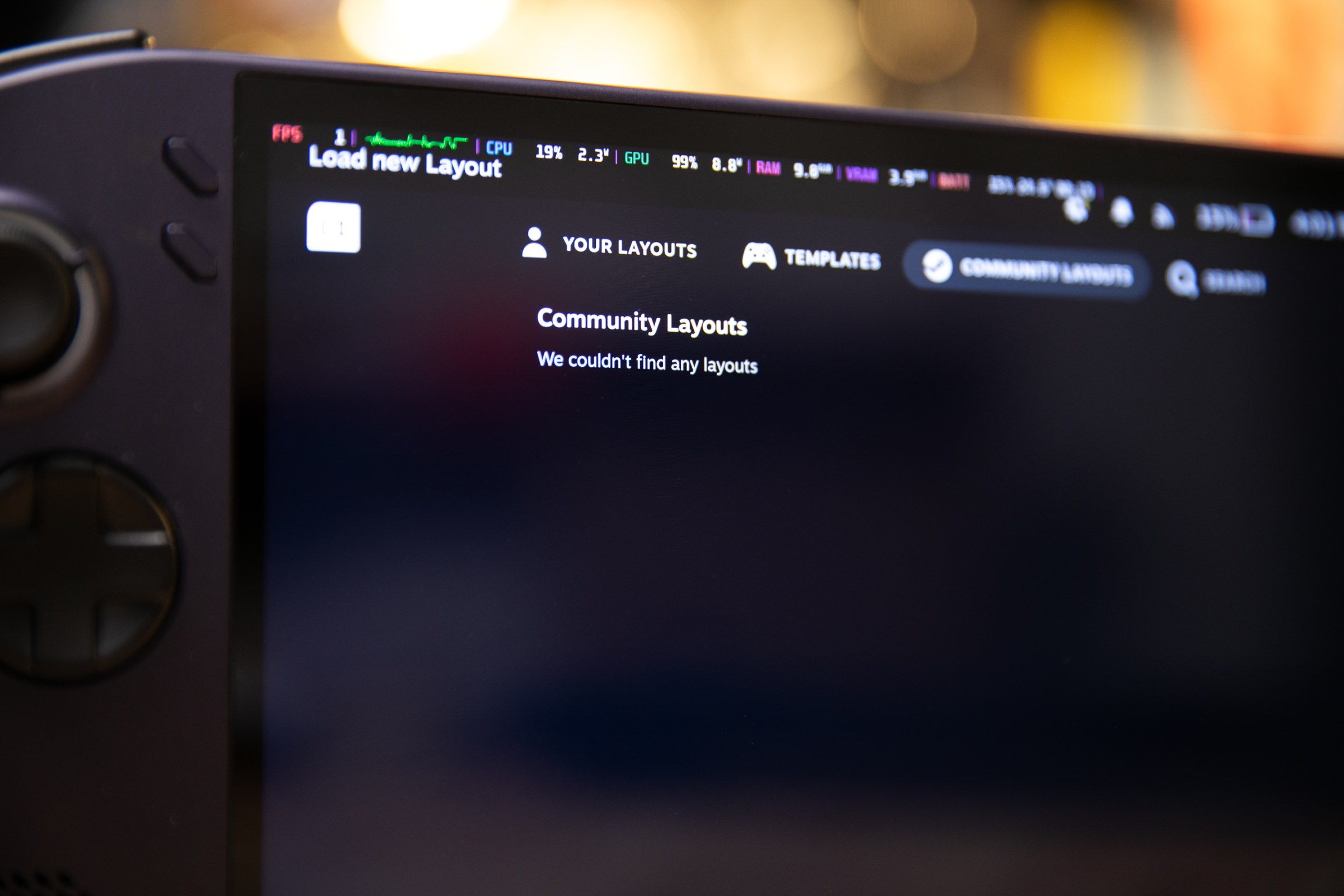
As I explained in my review of the Windows Legion Go S, though, this hardware does feel great. It’s solid, reassuringly well-built, with my second-favorite screen on a handheld after the Steam Deck OLED. While it doesn’t have the true HDR or deep blacks of Valve’s OLED, the 8-inch IPS touchscreen makes the Steam Deck’s 7.4-inch screen seem cramped by comparison, to say nothing of the 7-inch ROG Ally X. And like the Ally, Lenovo’s 120Hz variable refresh rate can make for smoother gameplay, particularly on the model with AMD’s Z1 Extreme chip.
The Steam Deck’s one notable disadvantage is that its performance has only slightly improved in three and a half years as games continue to get more demanding. Big hits like Expedition 33 and Baldur’s Gate 3 have pushed it out of its comfort zone, and where rivals like the Legion Go S can unlock better performance when plugged into the wall or draining their batteries at very high rates, the Steam Deck can’t.
The Legion Go S officially brings those “turbo” modes to SteamOS, as well. But if that’s why you’re buying, don’t get the $599 Z2 Go model.
Game and power mode |
Z2 Go FPS |
Z1 Extreme FPS |
Deck OLED FPS |
Z2G battery drain |
Z1E battery drain |
Deck battery drain |
|---|---|---|---|---|---|---|
| Cyberpunk 2077, 15-watt TDP | 50 | 57 | 50 | 22W (~2.5h) | 25W (~2.2h) | 23.5W (~2.1h) |
| 20-watt TDP | 59 | 73 | N/A | 29W (~1.9h) | 32W (~1.7h) | N/A |
| 25-watt TDP | 63 | 79 | N/A | 36W (~1.5h) | 38W (~1.4h) | N/A |
| 30-watt TDP | 66 | 82 | N/A | 42.5W (~1.3h) | 44.5W (~1.2h) | N/A |
| DX: Mankind Divided, 15-watt TDP | 67 | 74 | 61 | 22.5W (~2.4h) | 25.5W (~2.2h) | 22W (~2.2h) |
| 20-watt TDP | 74 | 92 | N/A | 29W (~1.9h) | 32W (~1.7h) | N/A |
| 25-watt TDP | 77 | 99 | N/A | 35.5W (~1.5h) | 38.5W (~1.4h) | N/A |
| 30-watt TDP | 78 | 100 | N/A | 41.5W (~1.3h) | 45W (~1.2h) | N/A |
| Returnal, 15-watt TDP | 21 | 24 | 25 | 22.5W (~2.4h) | 25.5W (~2.2h) | 23W (~2.1h) |
| 20-watt TDP | 24 | 30 | N/A | 30W (~1.8h) | 32W (~1.7h) | N/A |
| 25-watt TDP | 26 | 32 | N/A | 36W (~1.5h) | 38.5W (~1.4h) | N/A |
| 30-watt TDP | 27 | 33 | N/A | 42.5W (~1.3h) | 45.5W (~1.2h) | N/A |
| Shadow of the Tomb Raider, 15-watt TDP | 54 | 62 | 57 | 23W (~2.4h) | 25W (~2.2h) | 23.5W (~2.1h) |
| 20-watt TDP | 59 | 83 | N/A | 29W (~1.9h) | 31.5W (~1.7h) | N/A |
| 25-watt TDP | 61 | 89 | N/A | 36W (~1.5h) | 37.5W (~1.5h) | N/A |
| 30-watt TDP | 62 | 93 | N/A | 42.5W (~1.3h) | 43.5W (~1.3h) | N/A |
| HZD Remastered, 15-watt TDP | 30 | 37 | 33 | 23.5W (~2.3h) | 25W (~2.2h) | 23W (~2.1h) |
| 20-watt TDP | 32 | 47 | N/A | 29W (~1.9h) | 32W (~1.7h) | N/A |
| 25-watt TDP | 33 | 50 | N/A | 35.5W (~1.5h) | 37.5W (~1.5h) | N/A |
| 30-watt TDP | 34 | 52 | N/A | 43W (~1.3h) | 44W (~1.3h) | N/A |
| Balatro, 3 to 5-watt TDP, 60fps cap | 60 | 60 | 60 | 8.1W (~6.8h) | 8.2W (~6.7h) | 6.9W (~7.1h) |
| Balatro, lowest playable wattage and brightness, 30-40fps | 30-40 | 30-40 | 30-40 | 7.6W (~7.2w) | 8.0 (~6.9h) | 5.2W (~9.4h) |
It’s not that the Z2 Go is slower than the Steam Deck overall. At max boost on wall power, the base Legion Go S can offer up to 35 percent better framerates. But the Z1 Extreme model offered up to 72 percent faster framerates than the Steam Deck and was 29 percent faster on average than the Z2 Go model. That’s enough to make a game feel smooth that was barely playable — like Expedition 33 at the lowest settings — or comfortably go up an entire graphics preset in most games when you’re plugged into the wall.
(If you do plan to plug the Legion Go S into the wall, you may want to turn on fast charging in the BIOS — hold down Power + Volume Up when booting, then change Charging Speed Selection — and get yourself a 100W power adapter, because Lenovo’s stock 65W adapter isn’t enough to keep the battery from draining while you’re playing full bore.)
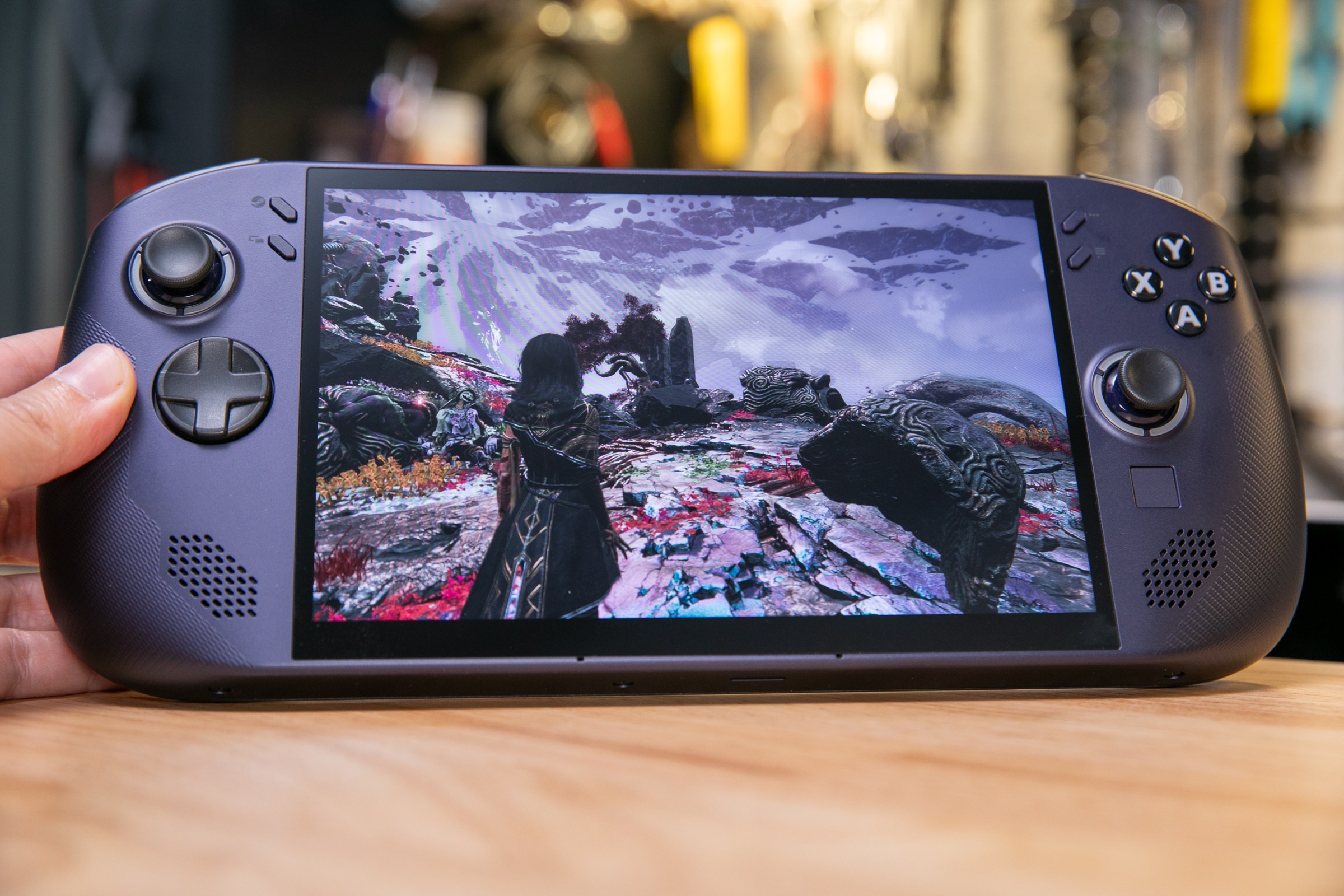
The Steam Deck OLED can’t do turbo at all, but its custom chip can hold its own against the Z2 Go in unplugged “balanced” power modes. When I capped both at the same 15 watt power draw, the Steam Deck won in Assassin’s Creed Valhalla and Deus Ex: Mankind Divided and tied in Cyberpunk 2077, even as it lost in Shadow of the Tomb Raider, Horizon Zero Dawn, and Returnal.
Another surprise in the Steam Deck’s favor: I played a lot of fiendish mansion-building mystery Blue Prince while testing the Legion Go S, and it’s far choppier on Lenovo’s handhelds. I don’t know if it’s had Steam Deck-specific optimizations, but I found I needed turbo mode on the Z1 Extreme for it to run as smoothly as it does on the Steam Deck.
If you do find yourself choosing between the two Lenovo Legion Go models, you won’t sacrifice much battery life by picking the beefier chip. In my tests, the Z1 Extreme model only drew 1 to 3 watts more than the Z2 Go on battery power — we’re talking about five minutes shorter battery life in the most intensive games and 15 minutes in less intensive ones.
But in those less intensive games like Dirt Rally or Balatro, the Steam Deck OLED is still the champ. Despite having a smaller 49Wh battery, it lasted over 50 minutes longer than either Legion Go S in my Dirt Rally battery drain test (where I set each handheld’s screen to the same brightness using a calibration tool) and managed two extra hours of magic poker game Balatro with battery-saving tweaks: 9 hours for Steam Deck vs. 7 hours for the Legion Go S.
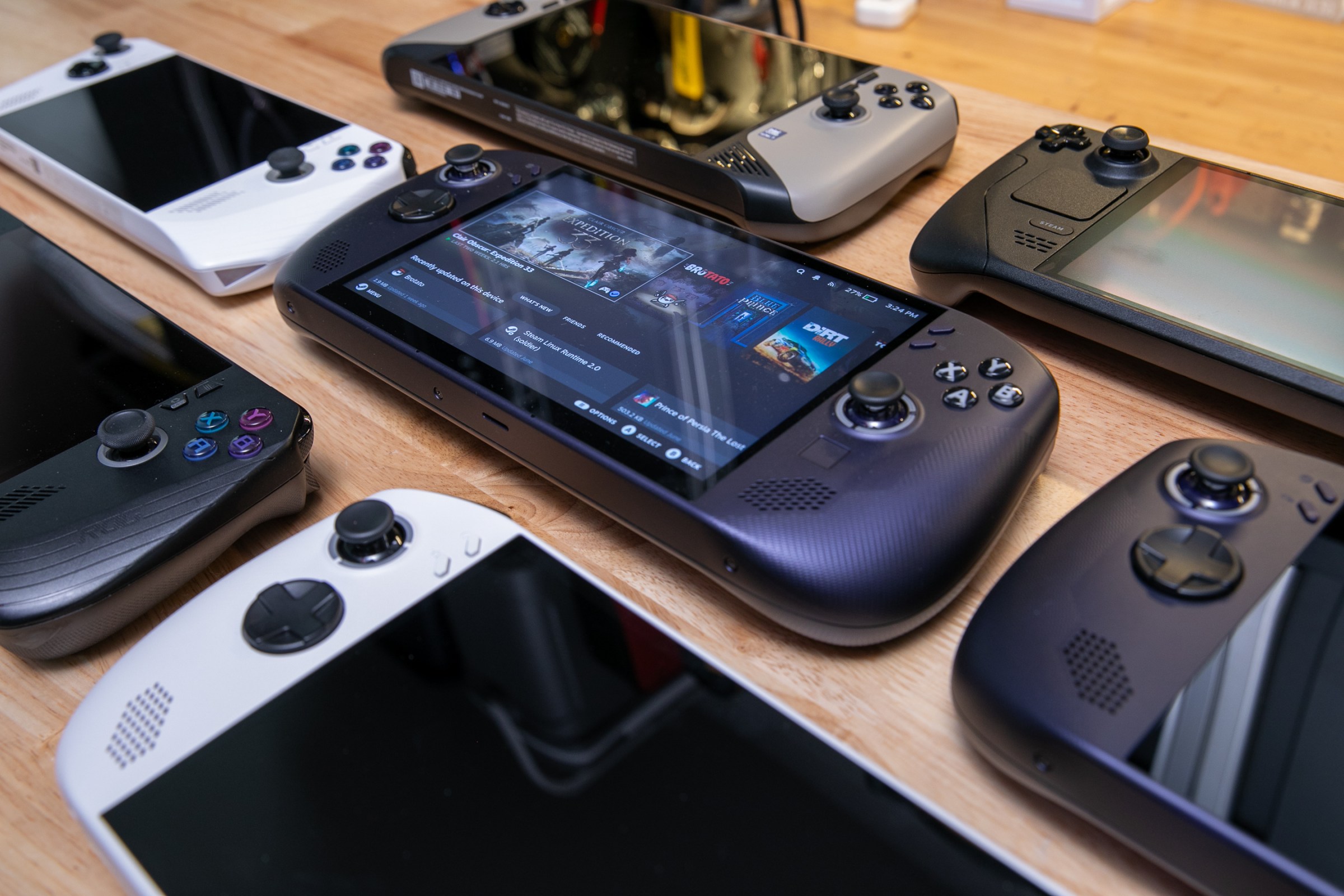
I have to hand it to Lenovo and Valve: after tangling with the Windows model, I thought the entire Legion Go S lineup was going to be dead on arrival. But that’s not the case. Even the Z2 Go runs faster and more efficiently than it did on Windows, and the Z1 Extreme version is a legitimately good handheld if you get it with SteamOS. (You can technically install SteamOS on the Windows-based Legion Go S, but Valve tells me that’s not officially supported, and I ran into several issues when I tried it in early June.)
Valve and Lenovo have also moved swiftly to address some of the bugs the SteamOS version launched with. In the month and change since release, it’s fixed wonkiness around the power modes and the variable refresh rate screen, and how both the tiny touchpad and joystick LEDs can sometimes stop working when the handheld goes to sleep. (We’re still waiting on a way to control those RGB joystick LEDs in SteamOS, though.)
But while you might be happy with the $829 Z1 Extreme model around your home or otherwise close to an outlet, it’s not the best handheld you can buy. The Steam Deck OLED has it beat on price vs. performance and battery life for less intensive games, plus those community controller profiles and twin trackpads. It’s the pick if you don’t need beefy turbo modes or a big screen.

You might also try installing Bazzite on an Asus ROG Ally X: I find it slightly less comfortable to hold, but with the same Z1 Extreme chip and a far larger 80Wh battery, it’s a better option than the Legion Go S for intensive games away from a plug.
Truthfully, though, I wouldn’t buy any PC handheld at this particular moment. Lenovo’s greatest achievement with the Legion Go S was to prove the superiority of SteamOS over Windows for handhelds, but prices are unusually high right now and Microsoft is about to fire back.
Even if you have no interest in an Xbox Ally or Xbox Ally X this holiday season, it seems like Microsoft is finally trying to fix handheld Windows. I, for one, would want to know how the updated OS fares, and which devices will get it, before I buy a new handheld.
Photography by Sean Hollister / The Verge
Read the full article here
